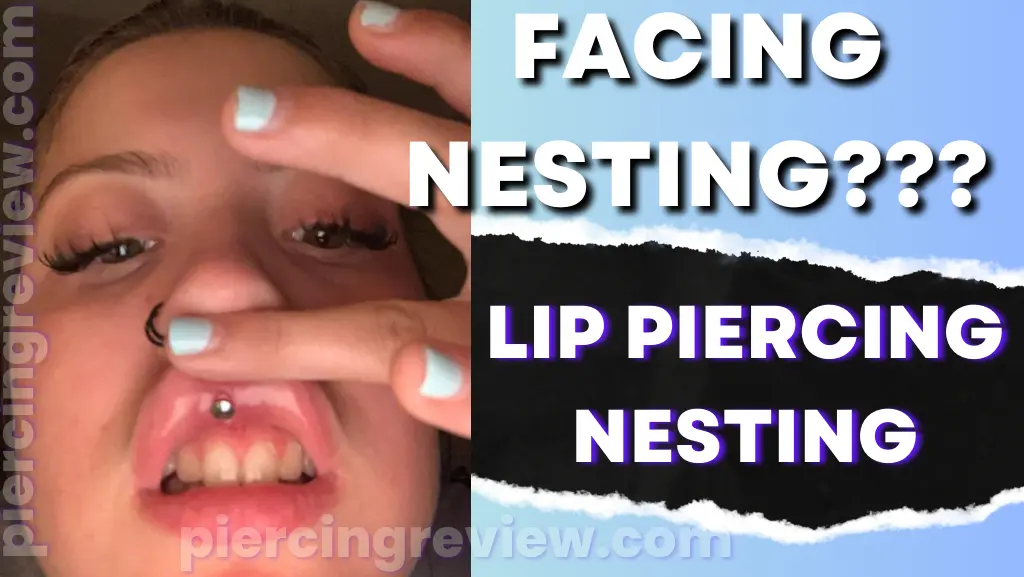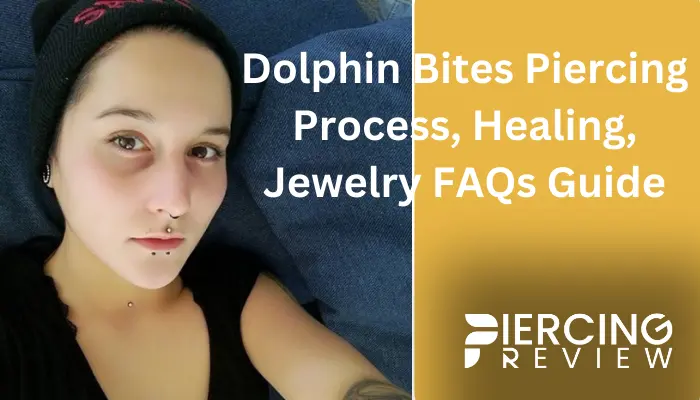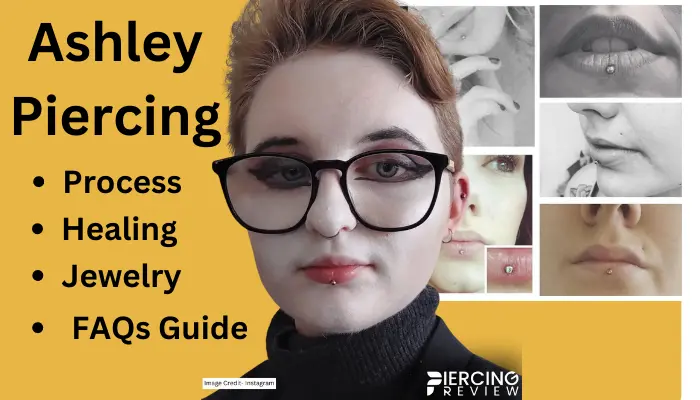The Complete Guide to Lip Piercing Nesting: Causes, Prevention, and Care
Discover the Hidden Truths of Lip Piercing Nesting!
Delve into the Fascinating World of Causes, Prevention, and Expert Care for Flawless Lip Piercings.
Long for a Stunning Lip Piercing? This Guide Will Show You How!
Take the Plunge into “The Complete Guide to Lip Piercing Nesting: Causes, Prevention, and Care” for Your Perfect Lip Piercing Journey!
Understand Nesting Lip Piercing
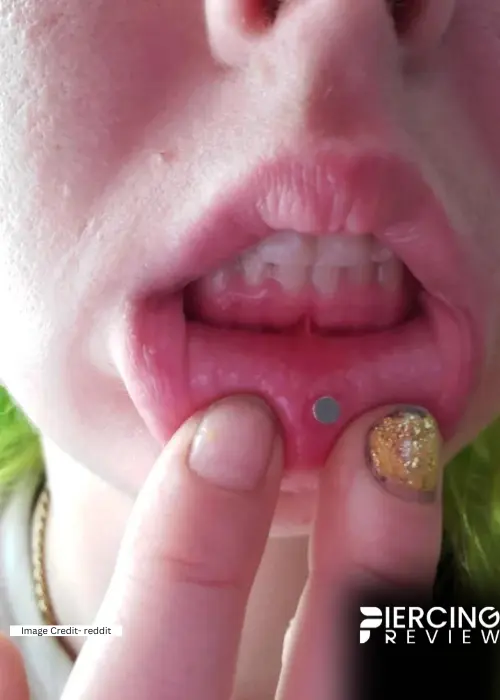
Lip piercing is a form of self-expression, allowing individuals to showcase their unique style. However, during the healing process, lip piercing nesting can occur, causing discomfort and concern. In this detailed guide, we will explore various aspects of lip piercing nesting, including its causes, prevention, and effective care methods. We will also address common concerns related to medusa, oral, tongue, and labret piercings, providing valuable insights to ensure a successful healing journey.
Lip piercing nesting is a natural occurrence during the healing process, wherein the tissue around the piercing contracts, forming a pocket for the jewelry to nestle into. Although this might cause mild discomfort, it is typically not a cause for alarm.
Is Nesting Normal in Lip Piercing?
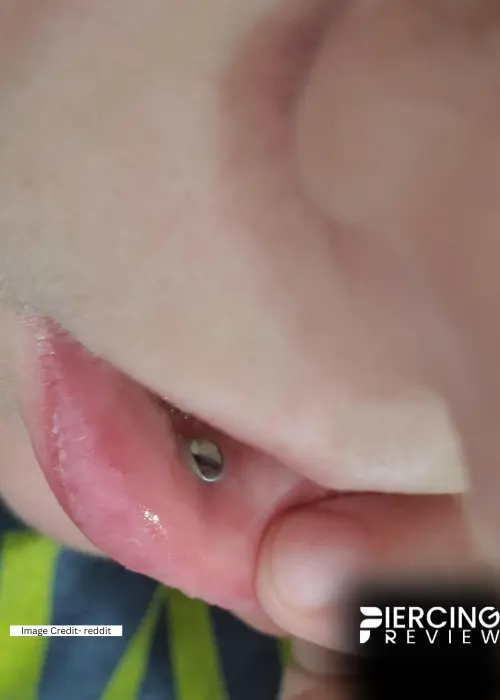
Yes, lip piercing nesting is a normal part of the healing process. It indicates that your body is responding to the piercing, and the tissue is adjusting to accommodate the jewelry.
my lip piercing is nesting what to do?
If you notice that your lip piercing is nesting, don’t worry; you can take steps to address the issue and promote healing. Here’s what you can do:
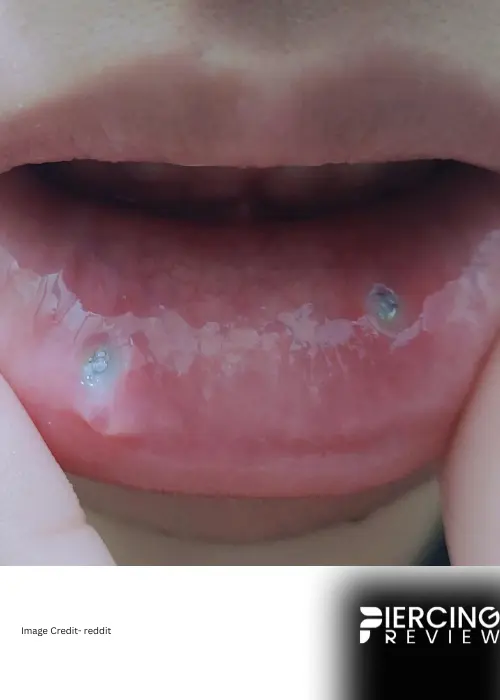
- Gently Push the Jewelry Back: If the jewelry is not completely stuck, you can try to gently push it back out of the pocket with clean fingers. Be very gentle and avoid applying excessive force.
- Seek Professional Help: If you are unable to push the jewelry back out or if you’re uncertain about what to do, it’s best to visit a professional piercer. They have the expertise to assess the piercing and provide appropriate advice and care.
- Be Patient: The healing process for lip piercings can take several months. Be patient and avoid touching or playing with the jewelry, as this can worsen the nesting.
- Maintain Proper Aftercare: Continue with your regular aftercare routine, cleaning the piercing twice a day with a mild saline solution or soap and water. Avoid overcleaning, as this can irritate the tissue.
- Avoid Removing the Jewelry Yourself: Unless advised by a professional piercer, avoid removing the jewelry yourself. Removing the jewelry prematurely can disrupt the healing process and potentially cause more issues.
- Consult Your Piercer: Keep your piercer informed about any changes or concerns you have regarding your lip piercing. They can provide guidance and support throughout the healing process.
- Consider Jewelry Adjustments: If your piercer deems it necessary, they may suggest changing the jewelry to a more suitable size or style to reduce nesting and promote healing.
Recommended Aftercare Products
- Alcohol-free mouthwash: Gentle on the healing piercing.
- Saline solution: Helps cleanse the pierced area without causing irritation.
piercing embedding vs nesting
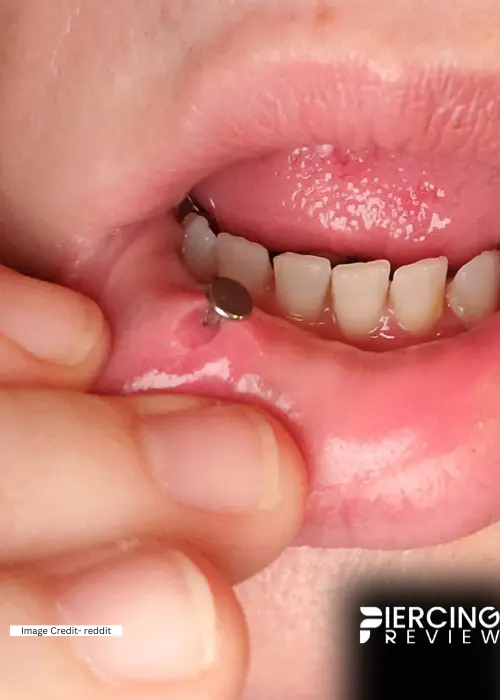
Piercing embedding and piercing nesting are two different complications that can occur with piercings. Embedding occurs when the skin grows over the top of the jewelry, while nesting occurs when the jewelry sinks into the pierced tissue.
Embedding is a more serious complication than nesting. It can cause pain, infection, and even the loss of the piercing. Embedding is most likely to occur if the jewelry is too small or if the piercing is not properly cared for.
Nesting is usually not a serious complication. It can be uncomfortable, but it usually does not cause any lasting damage. Nesting is most likely to occur during the healing process, when the tissue is still fragile.
Here is a table that summarizes the key differences between piercing embedding and piercing nesting:
| Characteristic | Piercing Embedding | Piercing Nesting |
|---|---|---|
| Definition | The skin grows over the top of the jewelry. | The jewelry sinks into the pierced tissue. |
| Severity | More serious | Less serious |
| Causes | Jewelry is too small, piercing is not properly cared for. | Jewelry is the correct size, piercing is properly cared for. |
| Symptoms | Pain, infection, loss of piercing. | Uncomfortable feeling, jewelry may be difficult to remove. |
| Treatment | Jewelry may need to be removed, piercing may need to be redone. | Jewelry may need to be replaced with a larger size. |
how to stop lip piercing nesting
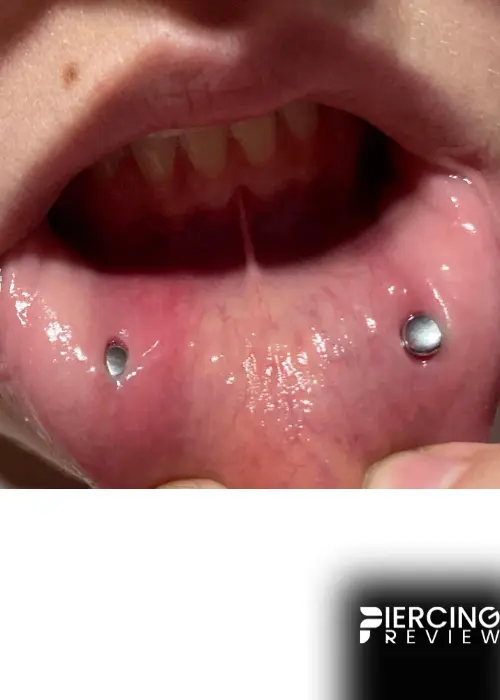
- Choose the Right Jewelry: Opt for a straight barbell that fits your piercing correctly. Avoid hoops and curved barbells, as they are more likely to cause nesting.
- Avoid Long Bars: Longer bars can increase pressure on the tissue, leading to nesting. Ensure your jewelry is properly sized to avoid complications.
- Maintain Good Oral Hygiene: Regularly rinse your mouth with an alcohol-free mouthwash after meals to prevent plaque buildup and promote a clean environment for healing.
- Gentle Aftercare: Handle your piercing gently and avoid playing with it, as this can cause irritation and worsen nesting.
- Clean Your Piercing Regularly: Use a mild saline solution or soap and water to clean your piercing twice a day. Avoid overcleaning, as it can irritate the tissue.
- Avoid Touching the Piercing: Refrain from touching your piercing without clean hands. Touching can introduce bacteria and lead to irritation and nesting.
- Be Patient: Lip piercings can take several months to heal completely. Be patient and resist the urge to change or remove the jewelry prematurely.
- Seek Professional Advice: If you notice any signs of nesting or are concerned about your piercing’s healing process, consult your piercer. They can assess the situation and provide guidance on proper care.
- Avoid Smoking and Alcohol: Smoking and alcohol consumption can slow down the healing process and increase the risk of complications, including nesting.
- Follow a Balanced Diet: A healthy diet can aid in the healing process. Consume foods rich in vitamins and minerals that promote tissue repair.
medusa piercing nesting
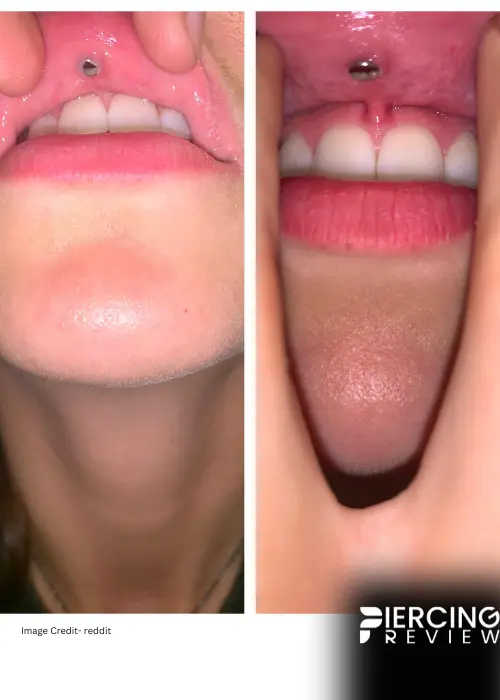
Medusa piercing nesting refers to the occurrence of tissue shrinkage around a medusa (philtrum) piercing, creating a pocket where the jewelry nests or sinks into the lip. This can lead to discomfort and aesthetic concerns during the healing process.
Advantages of Medusa Piercing Nesting:
- Minimal Risk of Rejection: Medusa piercings generally have a lower risk of rejection compared to other facial piercings, such as cheek or eyebrow piercings.
- Versatile Jewelry Options: Once healed, there is a wide range of jewelry styles and materials available for medusa piercings, allowing for individualized customization.
Disadvantages of Medusa Piercing Nesting:
- Discomfort and Irritation: Nesting can cause discomfort, irritation, and even soreness, particularly during the initial healing period.
- Healing Challenges: The location of the medusa piercing, in the delicate center of the upper lip, can make the healing process more sensitive and challenging.
- Long Healing Time: Medusa piercings may take several months to fully heal, during which time they can be more susceptible to nesting and other complications.
nesting medusa piercing
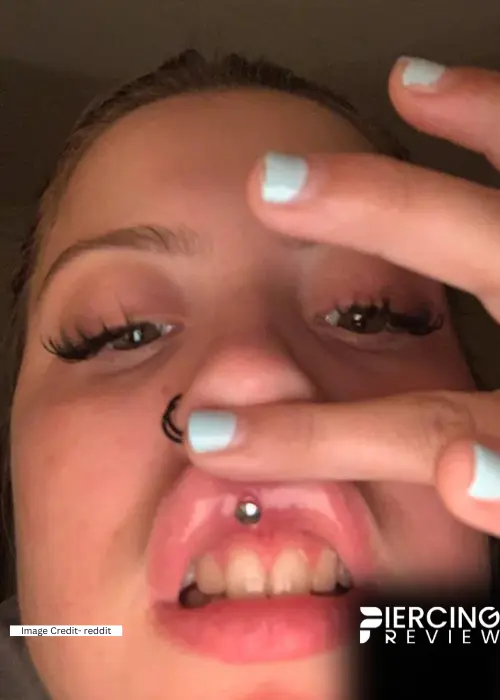
Nesting Medusa Piercing: A nesting medusa piercing refers to the occurrence of tissue shrinkage around the medusa (philtrum) piercing, resulting in the jewelry nesting or sinking into the lip. This can lead to discomfort and may be a common occurrence during the healing process.
Normal or Not: Nesting in a medusa piercing is relatively common during the initial healing stages. It is usually not a cause for concern and should subside as the tissue heals.
Care Tips: To address nesting in a medusa piercing, follow proper aftercare, avoid touching or playing with the piercing, and consult your piercer if you have any concerns.
medusa piercing nesting normal
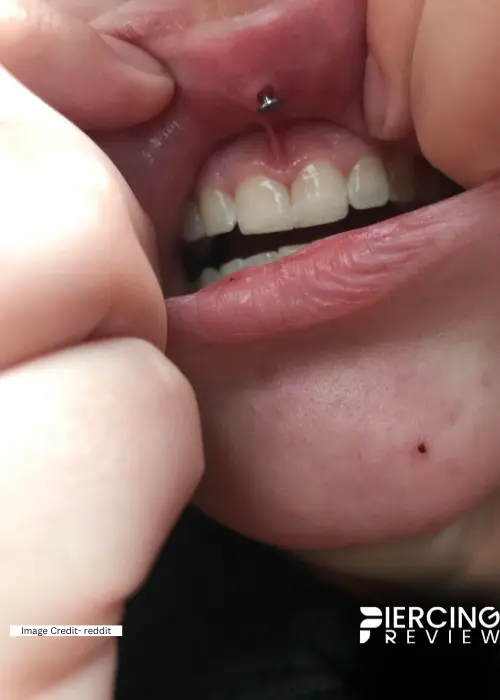
Medusa Piercing Nesting Normal: Medusa piercing nesting is considered a normal occurrence during the healing process. It happens when the tissue around the piercing contracts, creating a pocket where the jewelry can nestle into.
Normal or Not: Medusa piercing nesting is a common part of the healing process and should not be a cause for alarm.
Care Tips: To ensure a smooth healing process and minimize nesting discomfort, follow aftercare instructions, avoid changing jewelry prematurely, and maintain good oral hygiene.
Oral Piercing Nesting
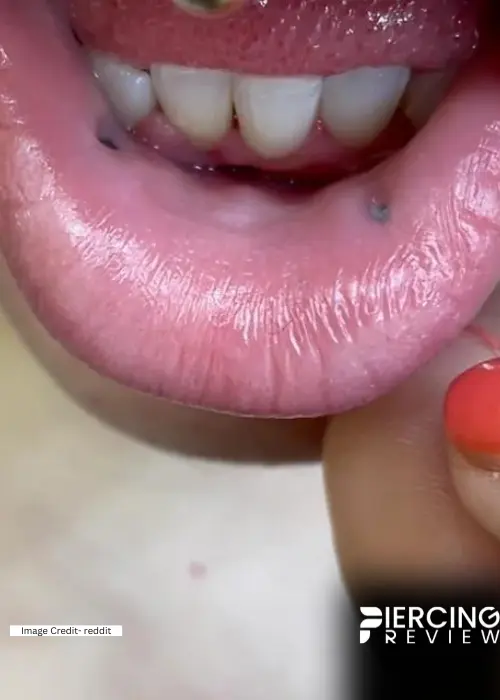
Oral Piercing Nesting: Oral piercings, including tongue and lip piercings, can also experience nesting. This refers to the tissue shrinkage around the piercing, causing the jewelry to sink into the surrounding tissue.
Normal or Not: Oral piercing nesting is not uncommon, especially during the early stages of healing. It is generally considered a normal part of the healing process.
Care Tips: Practice gentle aftercare, and avoid playing with the jewelry to prevent additional irritation and nesting.
Philtrum Piercing Pesting
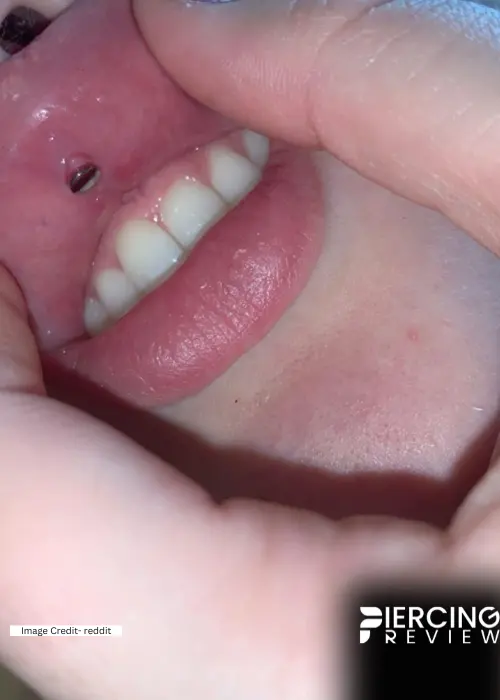
Philtrum Piercing Nesting: Philtrum piercing nesting refers to the nesting of jewelry in the philtrum, or the groove above the upper lip, during the healing process.
Normal or Not: Philtrum piercing nesting can occur during the initial healing period and is generally considered normal.
Care Tips: Maintain proper aftercare, avoid long bars that may cause additional pressure, and consult your piercer if you experience any persistent discomfort or concerns.
Ashley Piercing Nesting
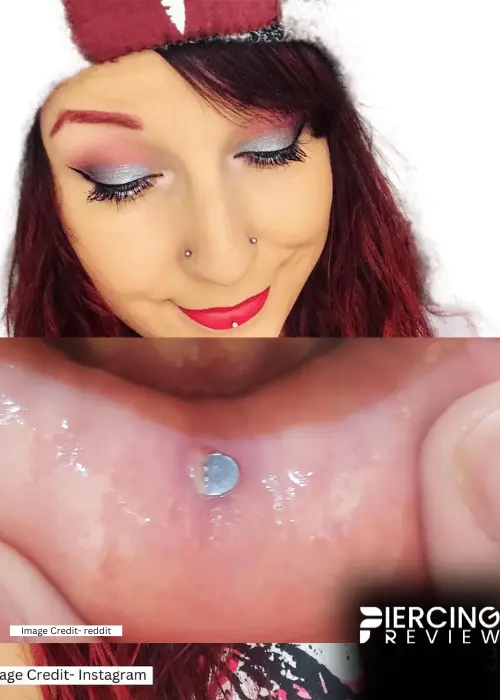
Ashley Piercing Nesting: Ashley piercing nesting occurs when the tissue around the ashley (inverse vertical labret) piercing contracts, causing the jewelry to nestle into the lip.
Normal or Not: Ashley piercing nesting is relatively common during the healing process and is usually not a cause for concern.
Care Tips: Follow appropriate aftercare guidelines, avoid touching the piercing, and consult your piercer if you notice any signs of infection or persistent discomfort.
Labret Piercing Nesting
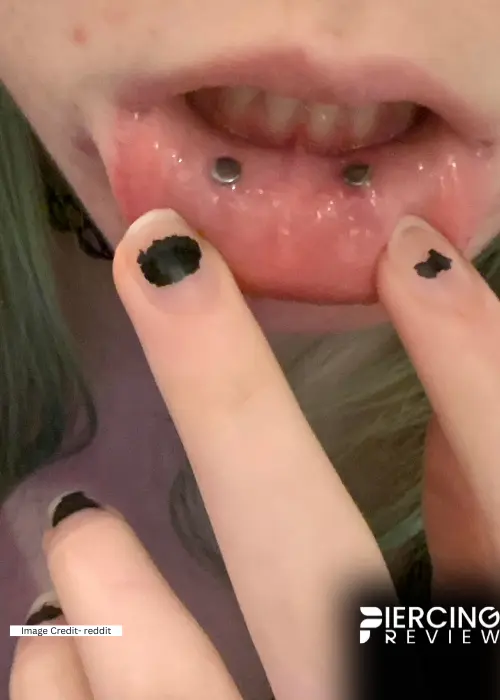
Labret Piercing Nesting:
A labret piercing nesting occurs when the tissue around the labret piercing (located just below the lower lip) starts to shrink, creating a pocket where the jewelry nests or sinks into the lip. This can lead to discomfort and aesthetic concerns during the healing process.
Normal or Not: Labret piercing nesting can be a relatively common occurrence during the initial healing stages. It is usually not a cause for alarm and often subsides as the tissue heals.
Care Tips: To address nesting in a labret piercing and promote healing: Follow proper aftercare.
tongue piercing nesting
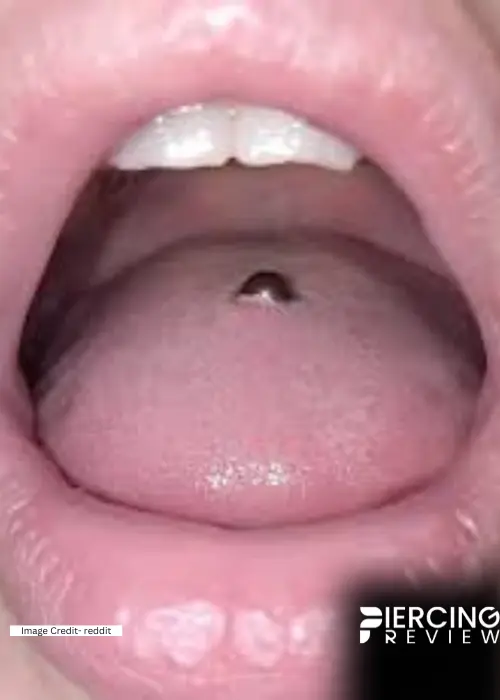
Tongue piercing nesting refers to the occurrence of tissue shrinkage around a tongue piercing, creating a pocket where the jewelry nests or sinks into the tongue. This can lead to discomfort and concerns during the healing process.
is tongue piercing nesting normal

Yes, tongue piercing nesting is a relatively common occurrence during the healing process of a tongue piercing. As the tongue is a muscle, it may naturally adjust to the presence of the piercing jewelry, causing some nesting. While it can be uncomfortable, it is usually not a cause for alarm.
how to stop tongue piercing nesting
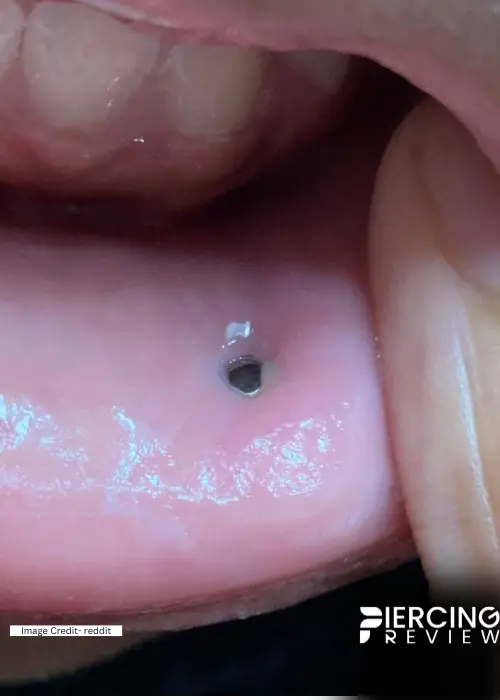
To minimize tongue piercing nesting and promote healing, follow these tips:
- Proper Aftercare: Follow the aftercare instructions provided by your piercer.
- Avoid Touching or Playing with the Piercing: Refrain from touching or moving the jewelry unnecessarily, as this can cause irritation and worsen nesting.
- Ice Pack: If you experience swelling or discomfort due to nesting, applying a cold compress or ice pack to the area may help reduce inflammation.
- Avoid Smoking and Alcohol: Smoking and alcohol consumption can slow down the healing process and increase the risk of complications, including nesting.
- Choose the Right Jewelry: Ensure your piercing jewelry is the appropriate size and material for a tongue piercing. High-quality materials like surgical stainless steel or titanium are recommended.
- Maintain Good Oral Hygiene: Regularly brush your teeth and use an alcohol-free mouthwash to keep your mouth clean and minimize the risk of infection.
- Seek Professional Advice: If you have concerns about your tongue piercing nesting or experience persistent discomfort, consult your piercer. They can assess the piercing and provide personalized advice.
Conclusion
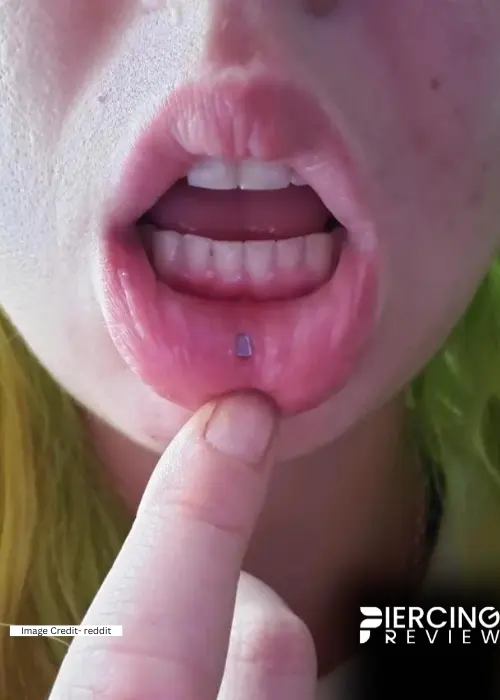
Understanding and Managing Lip Piercing Nesting
In conclusion, lip piercing nesting is a natural occurrence that can happen during the healing process of a lip piercing. While it may cause discomfort and raise concerns for some individuals, it is generally a normal part of the body’s response to the piercing.
During the initial stages of healing, the tissue around the piercing may shrink, creating a pocket where the jewelry nests or sinks into the lip. This can be worrisome, but with patience, proper care, and attention to the signs, most nesting issues can be effectively managed.

The key to managing lip piercing nesting is to prioritize good aftercare practices. Choose appropriate jewelry made from high-quality materials such as titanium, and avoid long bars that may increase pressure on the tissue. Refrain from touching or playing with the piercing, as this can lead to irritation and exacerbate nesting.
Regularly cleaning the piercing with a mild saline solution or soap and water is crucial to minimize the risk of infection and promote a clean environment for healing. Avoid smoking and alcohol consumption, as they can hinder the healing process and prolong nesting.
If you encounter persistent discomfort, swelling, or signs of infection, seek advice from a professional piercer or healthcare provider. They can assess the piercing and recommend appropriate care or medical attention if needed.
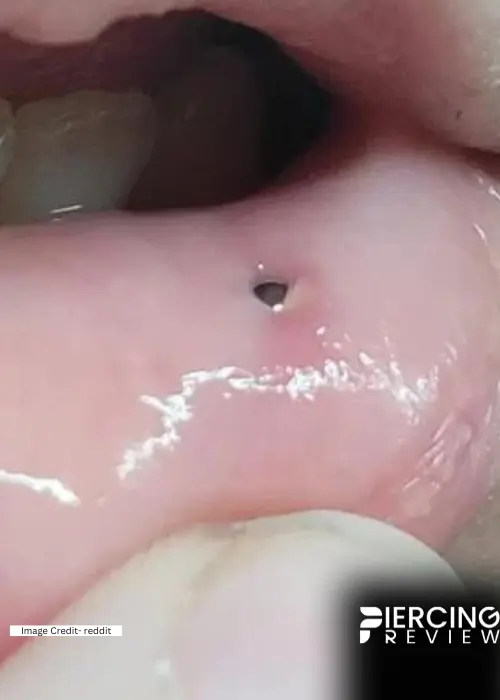
Remember, each individual’s healing journey is unique, and some nesting may be normal. However, being attentive to your body’s signals and following proper care guidelines will contribute to a successful healing experience.
Whether it’s your first piercing or you’re adding to your collection, understanding lip piercing nesting and its management is essential. With the best way to care for your piercing, the inside of your lip will heal beautifully without leaving a scar. Embrace the tenderness of the process, and soon enough, you’ll witness the wonderful happening of a new piercing becoming a part of your unique self-expression.
So, stay mindful, take care of your gums and the sensitive tissue around your piercing, and enjoy the beauty of your adorned lip with a carefully nested labret stud. The secretion of confidence that comes with a well-healed piercing is worth every step of the journey.
Remember, when it comes to lip piercing nesting, knowledge is power. Armed with the right information and care, you can confidently navigate the healing process of your new piercing.
Is it normal for my lip piercing to nest?
Yes, it is normal for a lip piercing to nest during the healing process. Nesting occurs when the tissue around the piercing shrinks, creating a pocket where the jewelry nests or sinks into the lip. While it can be uncomfortable, nesting is a common part of the healing journey and is usually not a cause for concern.
What does a nesting lip piercing mean?
A nesting lip piercing refers to the occurrence of tissue shrinkage around the piercing site, causing the jewelry to sink or nestle into the lip. This can lead to discomfort and may be visible when the jewelry appears to be flush with the surrounding tissue.
How do I stop my lip piercing from nesting?
To prevent or minimize lip piercing nesting, follow these tips:
Choose the Right Jewelry: Opt for a straight barbell that fits your piercing correctly. Avoid hoops and curved barbells, as they are more likely to cause nesting.
Maintain Proper Aftercare: Clean your piercing regularly with a mild saline solution or soap and water. Avoid overcleaning, as it can irritate the tissue.
Avoid Touching the Piercing: Refrain from touching or playing with the jewelry, as it can introduce bacteria and worsen nesting.
Be Patient: Lip piercings can take several months to fully heal. Be patient and allow the tissue to heal naturally.
How do you know if your piercing is nesting?
You may notice signs of nesting in your lip piercing if:
The jewelry is difficult to remove.
The jewelry appears to be flush with the surrounding tissue.
The skin around the piercing is red, swollen, or irritated.
You experience pain or discomfort around the piercing.
If you experience any of these symptoms, consult a professional piercer for an assessment and appropriate advice.

